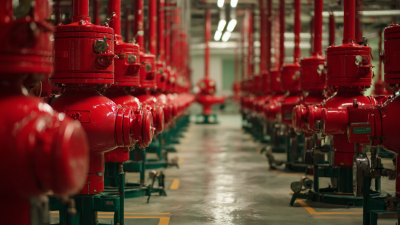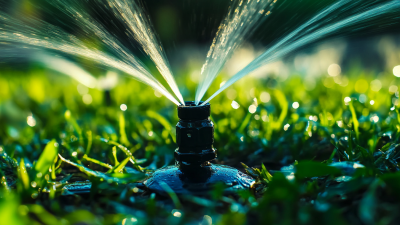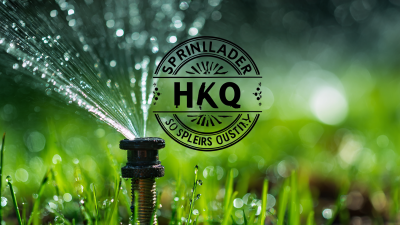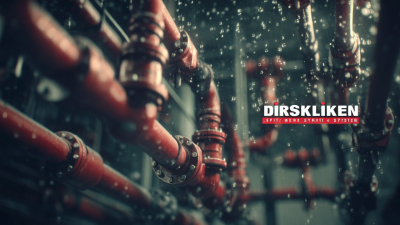Ultimate Guide to Understanding Fire Suppression Sprinkler Systems for Home Protection
Understanding the importance of a Fire Suppression Sprinkler System in residential settings has become increasingly crucial, especially given that the National Fire Protection Association (NFPA) reports that home fires account for nearly 75% of all fire-related deaths. In fact, according to a 2020 study by the NFPA, installing a fire sprinkler system in a home can reduce the risk of dying in a fire by approximately 81% and property damage by about 71%. As fires can spread rapidly, minutes can mean the difference between survival and tragedy. This ultimate guide aims to demystify the components, operation, and benefits of fire suppression systems, providing homeowners with the knowledge necessary to enhance their home safety. Understanding how these systems function is essential for effective fire risk management and can lead to not only increased safety but also potential savings on insurance premiums, as many insurers offer discounts for homes equipped with sprinkler systems.

Understanding the Basics of Fire Suppression Sprinkler Systems
Fire suppression sprinkler systems are critical components of residential fire safety, designed to detect and extinguish flames promptly. These systems, typically comprising pipes filled with pressurized water and strategically placed sprinklers, can significantly reduce the severity of fires. According to the National Fire Protection Association (NFPA), homes equipped with sprinkler systems experience a 50-70% reduction in fire-related fatalities. This staggering statistic underscores the importance of understanding how these systems work.
Sprinkler systems operate using a heat-sensitive element within each sprinkler head. When the temperature reaches a defined threshold, usually around 155°F, the element activates, releasing water directly onto the fire. This targeted response helps contain flames and prevent widespread damage. The NFPA also reports that sprinklered homes incur less property loss—about 70% less compared to non-sprinklered homes. Thus, familiarizing oneself with fire suppression sprinkler systems is not just beneficial but essential for enhancing the safety and security of your living environment.

Key Components and Their Functions in Home Sprinkler Systems
Fire suppression sprinkler systems play a crucial role in safeguarding homes from the devastating effects of fire. Understanding their key components and their functions is vital for effective fire protection. The primary element of any sprinkler system is the sprinkler head, which is responsible for discharging water when a fire is detected. Most systems use thermally activated heads that respond to heat, ensuring that only the areas where fire is present receive water, minimizing water damage and optimizing safety.
Another critical component is the piping system, which transports water from a centralized source to the sprinkler heads. This network must be designed to withstand high pressure and corrosion, ensuring reliability over time. Additionally, the water supply, often sourced from municipal systems or onsite tanks, provides the necessary pressure and flow rate for effective operation. Alarm systems and control valves also play essential roles, allowing for automated responses and alerts in the event of a fire, ensuring that homeowners are promptly notified and can take action to protect their property. Understanding these components will significantly enhance one’s ability to maintain and optimize home fire safety measures.
Fire Suppression Sprinkler Systems Key Components
How to Choose the Right Sprinkler System for Your Home
When selecting a fire suppression sprinkler system for your home, it’s crucial to assess your specific needs and the unique characteristics of your residence. Begin by evaluating the size and layout of your home, as these factors will determine the type and number of sprinklers required. For instance, larger homes may benefit from a more extensive system with multiple zones, while smaller homes might only need a few strategically placed sprinklers. Additionally, consider the construction materials of your home; different materials can affect how fire spreads and thus how quickly a sprinkler system will need to respond.
Another key consideration is the type of sprinkler system you wish to install. There are various options available, ranging from traditional wet systems that are filled with water at all times to dry systems that only release water when triggered. Think about the climate of your area, as those in colder regions might want to avoid wet systems due to the risk of pipe freezing. Lastly, consultation with a fire protection professional can provide valuable insights tailored to your home, ensuring you choose a system that effectively meets your safety needs while considering budget and maintenance requirements.
| System Type | Coverage Area (sq ft) | Response Time (seconds) | Installation Cost ($) | Maintenance Frequency (years) |
|---|---|---|---|---|
| Wet Pipe System | 500 - 2500 | 10 | 2500 - 5000 | 5 |
| Dry Pipe System | 300 - 3000 | 15 | 3000 - 7000 | 3 |
| Pre-Action System | 400 - 2000 | 12 | 4000 - 8000 | 4 |
| Deluge System | 500 - 3500 | 8 | 5000 - 9000 | 2 |
| Foam Water System | 300 - 1500 | 10 | 6000 - 10000 | 3 |
Installation Steps for Fire Suppression Sprinkler Systems
Installing a fire suppression sprinkler system in your home is a crucial step to enhance safety and minimize fire damage. These systems are designed to immediately respond to smoke and heat, effectively controlling a fire before it spreads. The installation process typically begins with a thorough assessment of your home layout and fire risk areas. It's important to comply with local building codes and standards, which can dictate the type of system and its placement. For new developments, some regions have increasingly mandated the inclusion of automatic sprinklers, emphasizing their importance for residential safety.

Once the planning phase is complete, the actual installation involves determining the best locations for sprinkler heads, connecting pipes designed to withstand freezing temperatures, and ensuring the system is adequately tested. Homeowners should consider using dry or pre-action systems in colder climates to prevent freezing, as well as insulating pipes or employing antifreeze solutions. As homes adapt to evolving fire safety needs, being proactive about installing these systems not only safeguards your property but also enhances overall peace of mind.
Maintenance Tips to Keep Your Sprinkler System Functioning Effectively
To maintain an effective fire suppression sprinkler system, regular maintenance is vital. Homeowners should begin with periodic inspections, ensuring that the water supply and pressures are appropriate. It’s important to check for any leaks or obstructions in the pipes and sprinkler heads, as any damage can severely impact the system's functionality during an emergency. Cleaning the sprinkler heads is equally crucial; dirt buildup can impede water flow, negating the system's purpose.
In addition to routine checks, homeowners should familiarize themselves with the manufacturer's maintenance guidelines. This includes scheduling professional inspections annually, where experts can conduct a thorough evaluation of the system. They can also provide insights on innovative water-efficient technologies that not only protect the home but also align with sustainable practices. As summer approaches, these proactive maintenance strategies ensure that the sprinkler system remains ready to function effectively when needed, while also contributing to overall water conservation efforts.
Related Posts
-

China's Premium Sprinkler Fire Protection: Elevating Quality and Dominating Global Markets
-

Top 10 Fire System Manufacturers from China at the 137th Canton Fair
-

Ultimate Checklist for Selecting the Best Dry Sprinkler System for Your Needs
-

How to Identify Quality Suppliers for Best Sprinkler Heads That Meet Your Needs
-

Challenges Associated with the Best Fire Sprinkler System Selection
-

How to Choose the Best Fire Mist System for Your Industrial Needs
